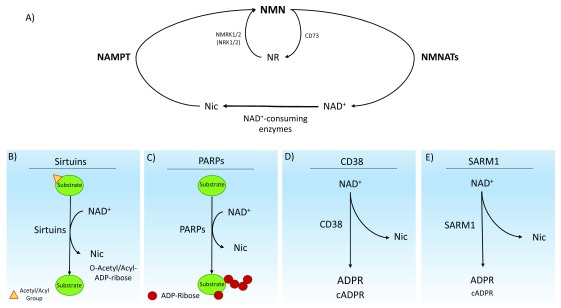Figure 1. The major nicotinamide adenine dinucleotide (NAD +) biosynthetic pathway and NAD +-consuming enzymes in mammals.
( A) The NAD + biosynthetic pathway from the precursor nicotinamide (NIC). The pathway is mediated by nicotinamide phosphoribosyltransferase (NAMPT), which produces nicotinamide mononucleotide (NMN). NMN is immediately converted to NAD + by NMN adenylyltransferases (NMNATs). Multiple enzymes consume NAD +, producing nicotinamide and various products. NIC can be salvaged to begin the biosynthetic pathway again. NMRK1 and NMRK2 (also known as NRK1 and NRK2), as well as CD73, can produce NMN and NR. (B) Enzymatic activity of sirtuins. The most common enzymatic reaction performed by sirtuins is the deacetylation of acetylated substrate proteins. The resulting products from the consumption of NAD + are NIC and O-acetyl-ADP-ribose. Sirtuins can also catalyze several other deacylation reactions. ( C) Enzymatic activity of poly-ADP-ribose polymerases (PARPs). In response to DNA damage, PARPs synthesize poly-ADP-ribose chains on a variety of target proteins, including itself, to act as a signal for DNA repair enzymes. The reaction produces the ADP-ribose chains and NIC. ( D) Enzymatic activity of CD38. The CD38 ectoenzyme catalyzes the synthesis of ADP-ribose (ADPR) or cyclic ADPR (cADPR) from NAD +. ( E) Enzymatic activity of SARM1. A newly discovered class of NADase, SARM1, consumes axonal NAD + after injury, catalyzing the synthesis of ADPR and NIC as well as a small amount of cADPR.

